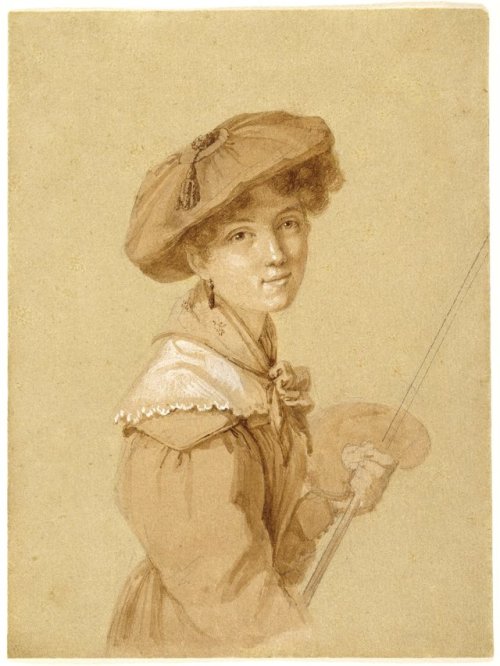Graphite and its mark-making properties were discovered in mid-16th century England—legend has it—wh
Graphite and its mark-making properties were discovered in mid-16th century England—legend has it—when a tree was uprooted revealing a large deposit of the mineral. Early graphite users wrapped sticks of it in string or leather, and the wood pencil was invented by 1565. Ever since, it has been an essential writing and drawing tool. Artists use graphite for practice and preparation ⇨ like Cezanne’s sketch of a sculpture he kept in his studio—as well as for finished works ⇨ like Chasseriau’s gift for a friend. Posted by Elizabeth TreptowAttributed to Eugénie Tripier-Le-Franc (French, 1805-1872). Portrait of Eugénie Tripier-Le-Franc (Portrait d'Eugénie Tripier-Le-Franc), or Self-Portrait, 1820-1829. Brown ink, graphite, and white opaque watercolor on wove paper, Sheet. Gift of Louis Thomas, 71.138.10 ⇨ Paul Cézanne (French, 1839-1906). Study from a Statuette of a Cupid (Étude de l'Amour plâtre), ca. 1890. Graphite on laid paper. Frank L. Babbott Fund, 39.623a-b ⇨ Théodore Chassériau (French, 1819-1856). Portrait of Jules Monnerot, 1852. Graphite on wove paper. Frank L. Babbott Fund, 39.622. -- source link
#bkmworksonpaper#drawing#drawings#graphite#mark#pencil#writing#tool#material#process#art#art history#artists#sketch#practioners#preperateion


